Scientists at the Technical University of Munich (TUM) in cooperation with partner companies have developed a device to provide back muscle training adapted to users' individual fitness levels. With the GyroTrainer, back strengthening exercises are adapted to the strength and ability of the individual user.
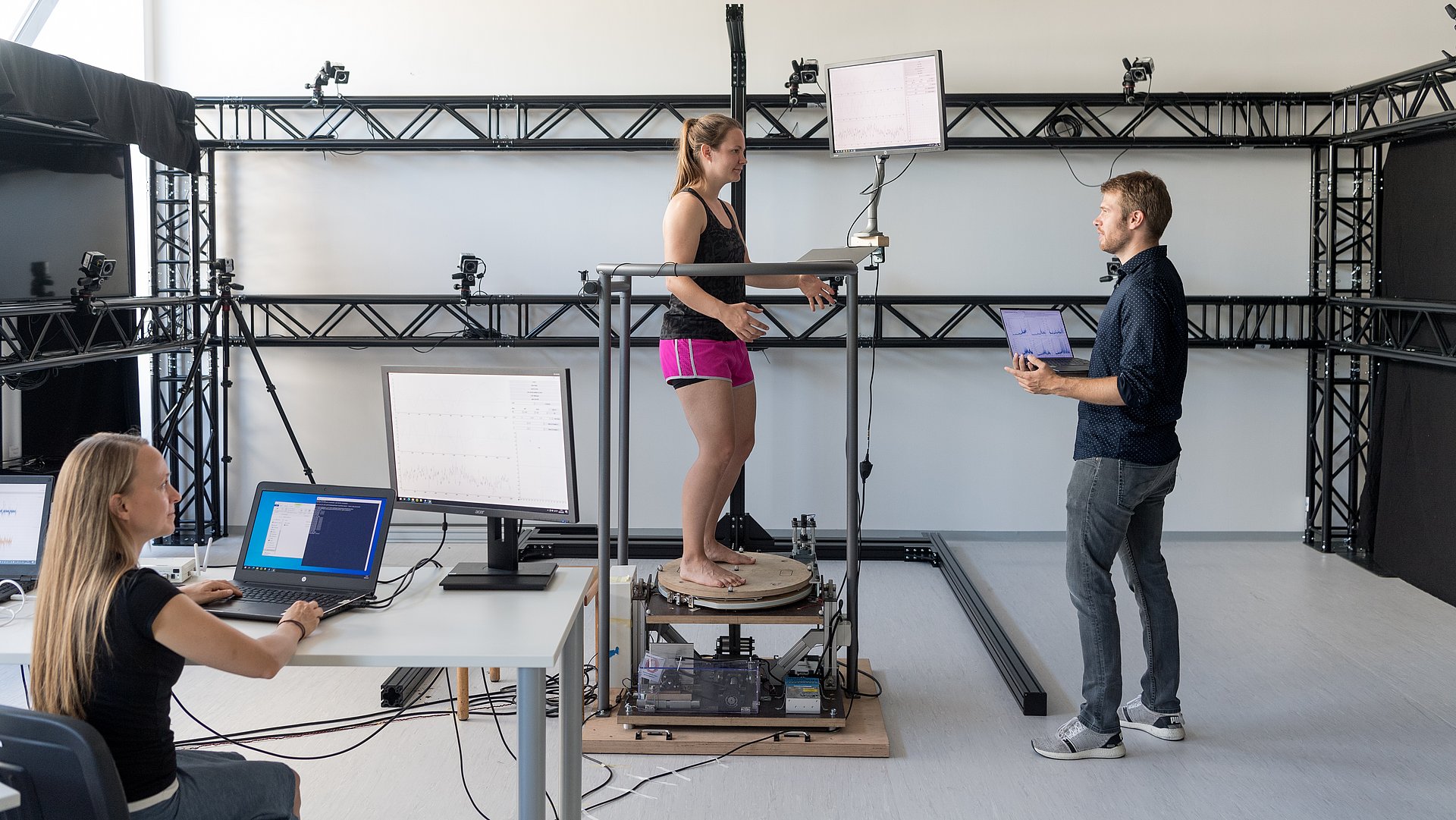 Andreas Heddergott / TUM
Andreas Heddergott / TUM Back pain is extremely widespread. According to figures in the most recent 2023 Health Report, issued by the German health insurer DAK, around 18 percent of cases in which employees submit sick notes involve musculoskeletal ailments, above all back complaints. After topping the table of individual diagnoses in 2022, back pain still ranks high, just behind COVID-19 and respiratory ailments. It is pleasing to note that the latest report shows a slight decline in the percentage of back-related conditions in total reported absences, from 6.5% to 5.3%. However: "Even young people are reporting back pain in increasing numbers. This trend didn't just start with the Covid-19 lockdowns," says Prof. Rainer Burgkart of TUM Klinikum rechts der Isar. In the Burden Disease Incidence Study, conducted in 2020 by the Robert Koch Institute (RKI), with data from over 5,000 patients in Germany, it turned out that almost two thirds of the respondents (61.3%) had experienced back pain in the previous year. Lower back pain affected 55% of women and 48.6% of men, while one in three women (32.6%) and one in five men (22%) suffered from upper back pain. Some years ago the Institute for Health Economics and Management of the Ludwig-Maximilians-Universität (LMU) estimated the economic impact of these ailments at around 50 billion euros. What can be done? "Physiotherapy and targeted muscle and coordination training are highly effective and are often prescribed in case of frequently diagnosed, non-specific back pain," says Dr. Burgkart, an orthopedic specialist. "However, on completing targeted treatment, most patients slip back into their old patterns of behavior and their back muscles become weaker again." An invention by TUM and Klinikum rechts der Isar - the GyroTrainer - is designed to promote long-term, tailor-made back exercises in the future.
Display external content
At this point content of an external provider (source: www.xyz.de) is integrated. When displaying, data may be transferred to third parties or cookies may be stored, therefore your consent is required.
You can find more information and the possibility to revoke your consent at www.tum.de/datenschutz.
I agree
GyroTrainer: Algorithm decides on intensity of training
Prof. Burgkart from Klinikum rechts der Isar, in cooperation with the Munich Institute of Robotic and Machine Intelligence (MIRMI) at TUM, the fitness equipment manufacturer Erhard Peuker GmbH, and the hardware and software specialist B&W Embedded Solutions GmbH, developed the GyroTrainer - a back muscle training device that can be adapted to the abilities of individual users. The work was carried out in a three-year research project. The GyroTrainer is based on a round platform 50 cm in diameters It can tilted to the front, back and sideways, and can also rotate. It resembles a gyroscope, which is designed to remain balanced in a wide range of configurations and positions.
Balance board as the starting point
A similar principle is used in the GyroTrainer. Users step onto the round platform and try to keep their balance. Sensors and electric motors located below the platform register the user's movements and can tilt and rotate the disk. The device works like a balance board, with the difference that the stiffness can be varied. The challenge is for users to keep their balance. "Preparing the device correctly is not a simple matter of adjusting it for the individual user," says researcher Elisabeth Jensen from MIRMI. "First we have to find the right stiffness for that person." If the user can comfortably keep their balance at a given stiffness level for a certain period of time, a learning algorithm decides on the right initial setting for the platform so that it is neither too easy or too difficult for the person.
Gaming concept: strengthening the back by playing a game
Then the actual training can begin. "Our cooperation partners have developed a computer game where the control comes from the user's movements," explains TUM researcher Jensen. It is modelled on the Space Invaders game. The player's spaceship automatically fires at the invaders at regular intervals while trying to evade incoming shots. "This takes skill and concentration," explains Jensen. The less rigid the platform setting, the harder it is to maintain stability and steer the spaceship. "It is also possible to add disruption factors," explains the orthopedics specialist Burgkart. The platform rotates suddenly to the left or right, which makes it even harder for the user to stay balanced. "At the start, the platform feels quite firm under the user's feet, but gradually becomes more unstable. And finally, for users in very good condition, it starts giving extra pushes," explains Burgkart. Using electromyography (EMG) sensors, the team confirmed that the system effectively activates the abdominal and back muscles that are important for spinal stability, and that the activity becomes even more challenging with the rotational movement. The less rigid the system becomes and the more frequent the sudden rotations occur, the greater the demands on the muscles. "Balancing movements are among the most effective methods," says Burgkart. He believes that the new training device should be used mainly for preventive purposes, both for primary patients, who have "elevated risk", and secondary patients, who have suffered from back pain in the past.
Next steps: from the concept to the product
After nearly three years of research, it is now clear: the GyroTrainer functions as intended and fulfils its medical purpose. "There are still a few steps to take before it can be used as a product," says Prof. Burgkart. The most important requirement for the future: the researchers want the device - which for safety reasons still has to be operated by TUM researchers - to be suitable for use without a physiotherapist or trainer. They also want it to be capable of adjusting dynamically to the ability of the individual user. The GyroTrainer already determines the individual stiffness via approximations and can make adjustments at any time using the measured data. In the future, the artificial intelligence function of the device will work as an independent, secure logical system to set the initial rigidity and select the difficulty level of the corresponding game options. It will also be able to make adjustments based on how the user is feeling on the day, fatigue levels and personal training progress. A final important requirement for the new back trainer: it has to fit into any living room: Prof. Burgkart's vision: "The machine has to be mobile so that people can train on a regular basis without having to go to a physiotherapist."
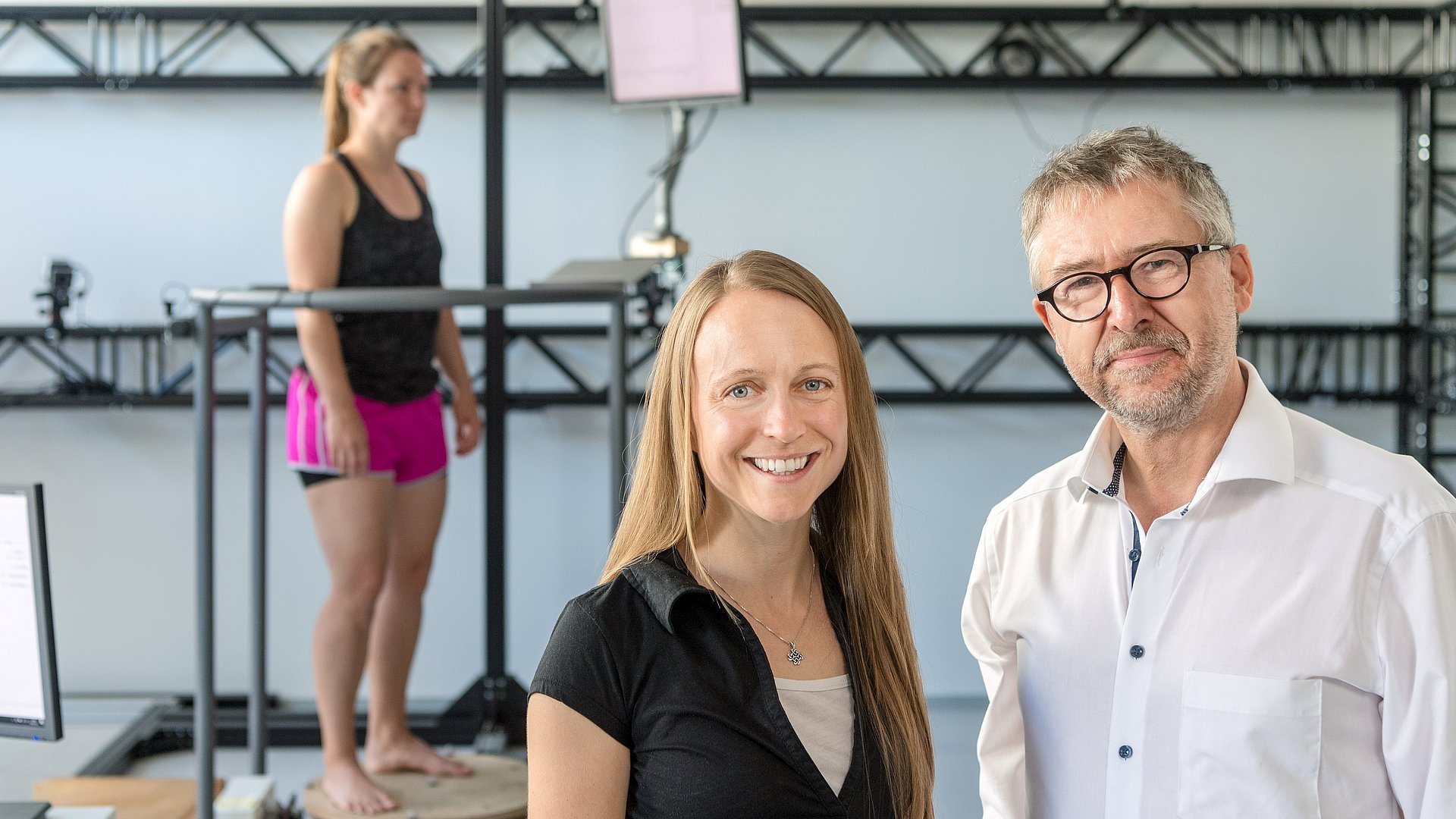 Andreas Heddergott / TUM
Andreas Heddergott / TUM 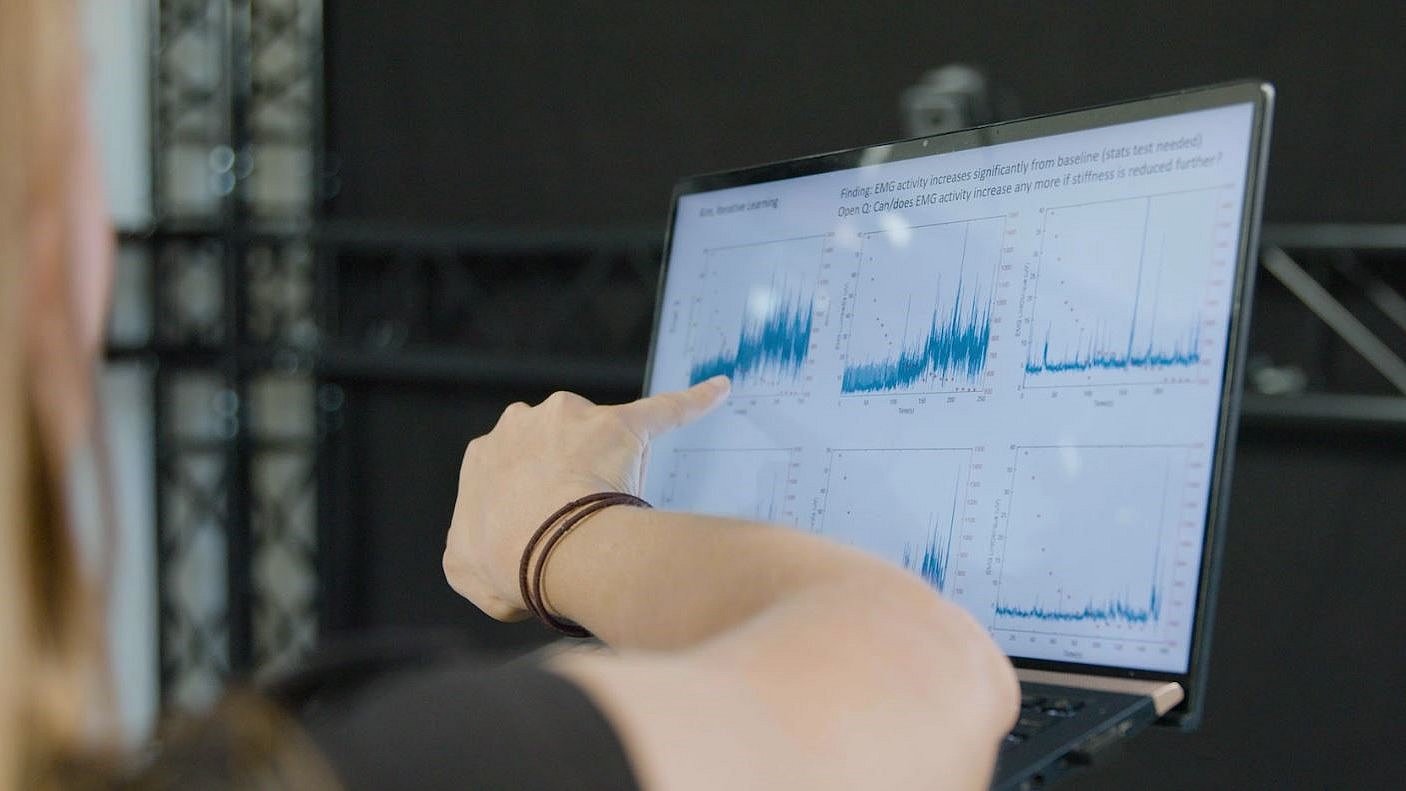 Andreas Schmitz / TUM
Andreas Schmitz / TUM 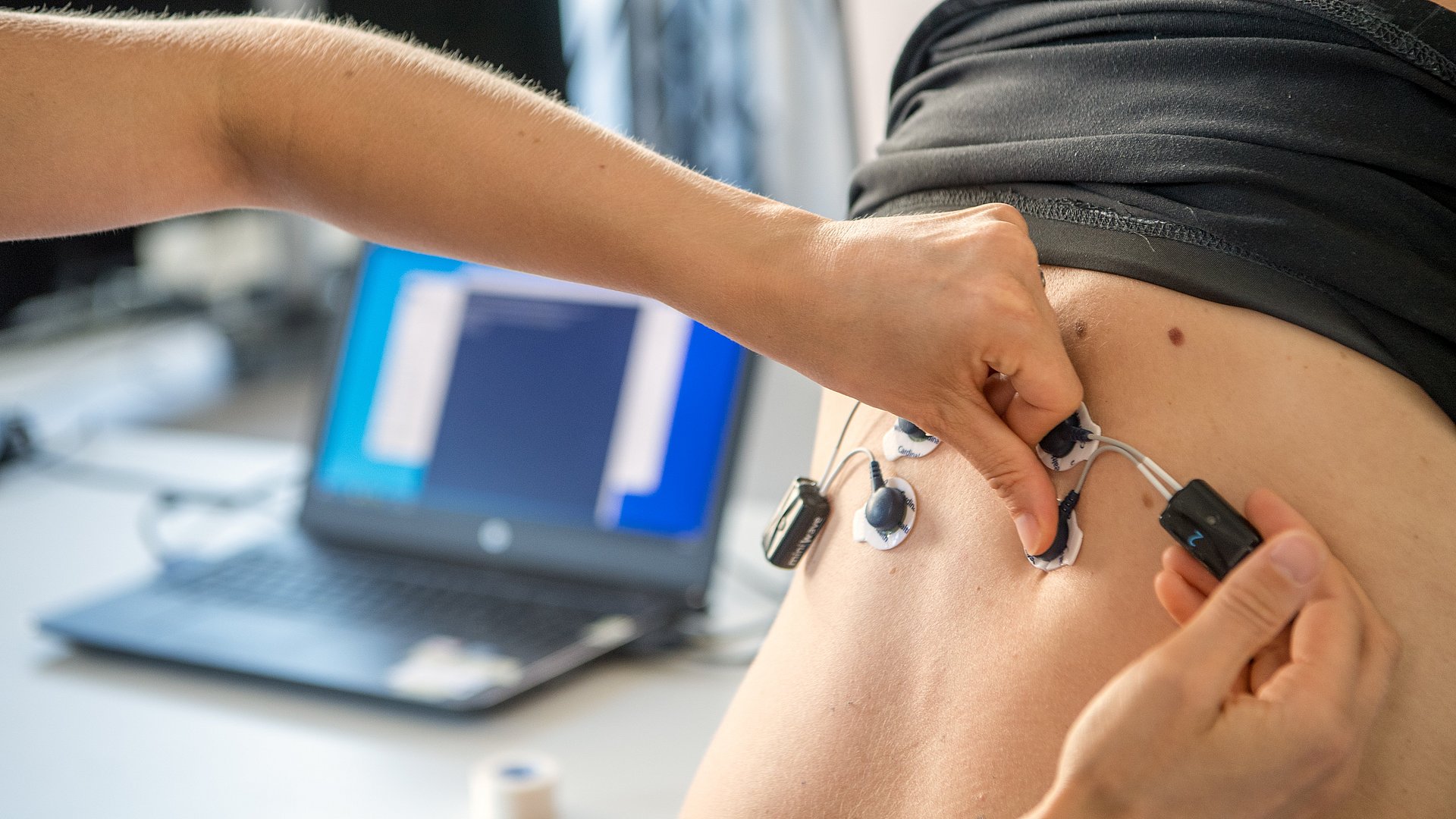 Andreas Heddergott / TUM
Andreas Heddergott / TUM 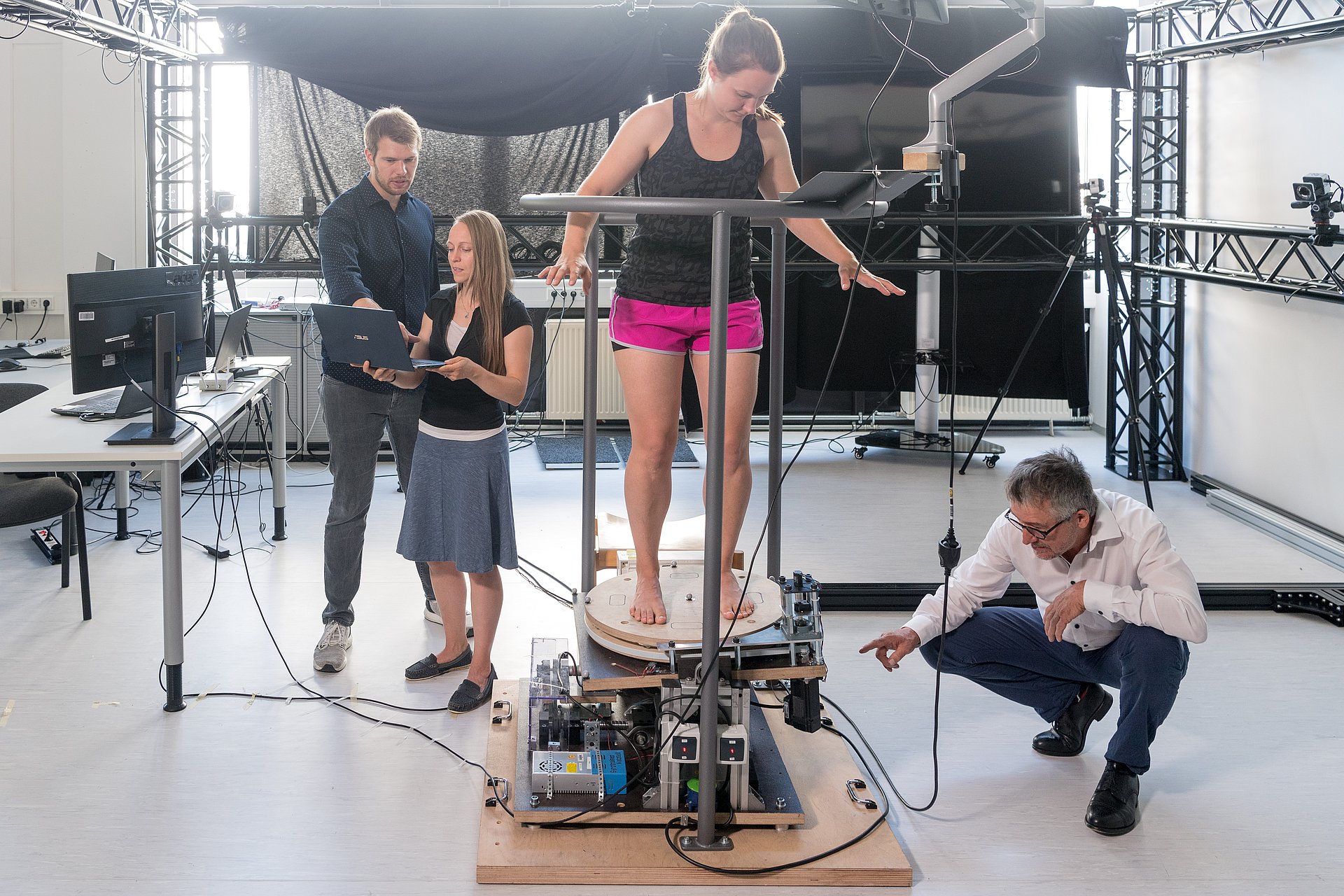 Andreas Heddergott / TUM
Andreas Heddergott / TUM  Andreas Heddergott / TUM
Andreas Heddergott / TUM Elisabeth Jensen; Reihaneh Mirjalili; Kim Peper; Dennis Ossadnik; Fan Wu; Jan Lang; Matthias Martin; Florian Hetfleisch; Rainer Burgkart; Sami Haddadin; Individualized Training of Back Muscles Using Iterative Learning Control of a Compliant Balance Board; International Conference on Rehabilitation Robotics (ICORR), 2023; https://ieeexplore.ieee.org/document/10304810/






